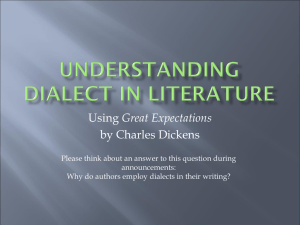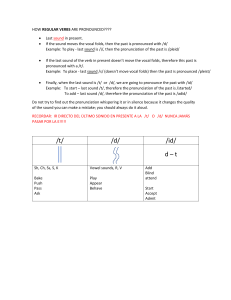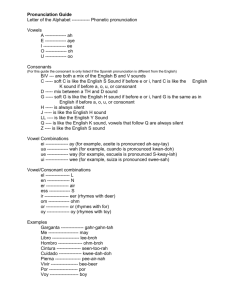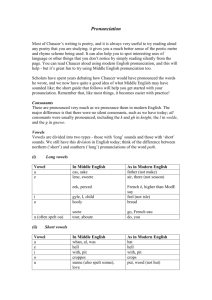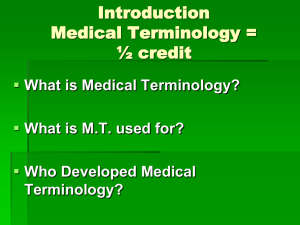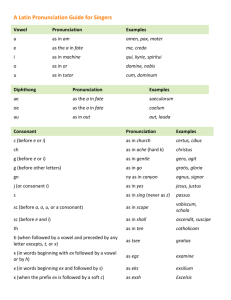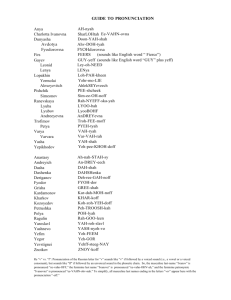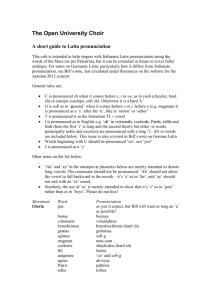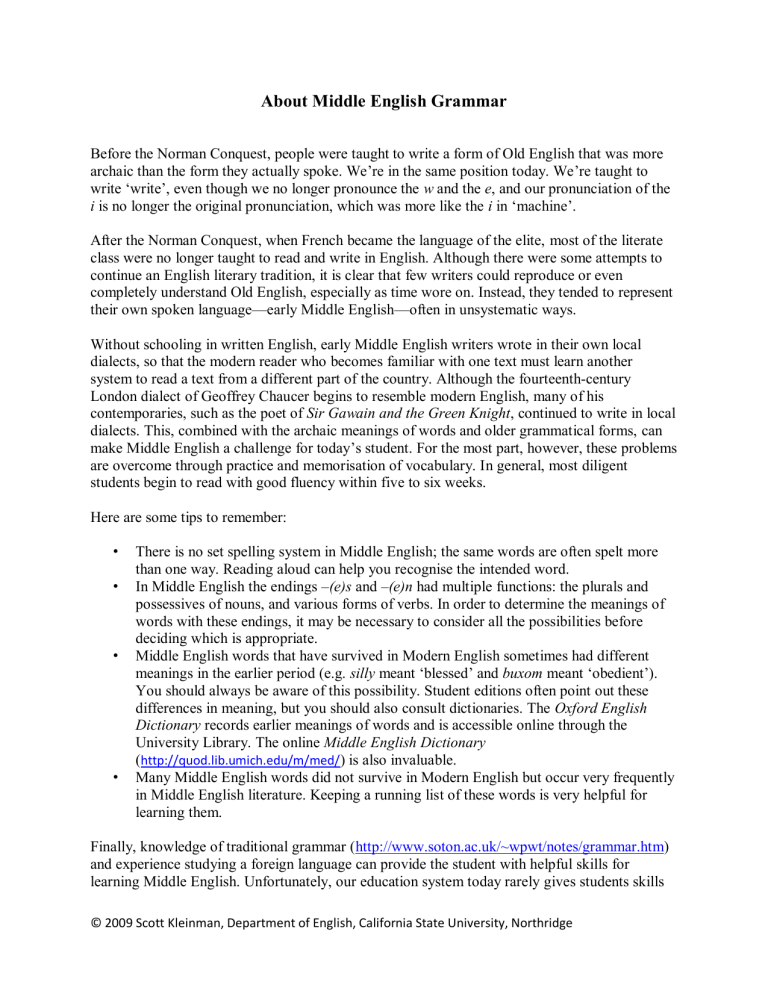
About Middle English Grammar Before the Norman Conquest, people were taught to write a form of Old English that was more archaic than the form they actually spoke. We’re in the same position today. We’re taught to write ‘write’, even though we no longer pronounce the w and the e, and our pronunciation of the i is no longer the original pronunciation, which was more like the i in ‘machine’. After the Norman Conquest, when French became the language of the elite, most of the literate class were no longer taught to read and write in English. Although there were some attempts to continue an English literary tradition, it is clear that few writers could reproduce or even completely understand Old English, especially as time wore on. Instead, they tended to represent their own spoken language—early Middle English—often in unsystematic ways. Without schooling in written English, early Middle English writers wrote in their own local dialects, so that the modern reader who becomes familiar with one text must learn another system to read a text from a different part of the country. Although the fourteenth-century London dialect of Geoffrey Chaucer begins to resemble modern English, many of his contemporaries, such as the poet of Sir Gawain and the Green Knight, continued to write in local dialects. This, combined with the archaic meanings of words and older grammatical forms, can make Middle English a challenge for today’s student. For the most part, however, these problems are overcome through practice and memorisation of vocabulary. In general, most diligent students begin to read with good fluency within five to six weeks. Here are some tips to remember: • • • • There is no set spelling system in Middle English; the same words are often spelt more than one way. Reading aloud can help you recognise the intended word. In Middle English the endings –(e)s and –(e)n had multiple functions: the plurals and possessives of nouns, and various forms of verbs. In order to determine the meanings of words with these endings, it may be necessary to consider all the possibilities before deciding which is appropriate. Middle English words that have survived in Modern English sometimes had different meanings in the earlier period (e.g. silly meant ‘blessed’ and buxom meant ‘obedient’). You should always be aware of this possibility. Student editions often point out these differences in meaning, but you should also consult dictionaries. The Oxford English Dictionary records earlier meanings of words and is accessible online through the University Library. The online Middle English Dictionary (http://quod.lib.umich.edu/m/med/) is also invaluable. Many Middle English words did not survive in Modern English but occur very frequently in Middle English literature. Keeping a running list of these words is very helpful for learning them. Finally, knowledge of traditional grammar (http://www.soton.ac.uk/~wpwt/notes/grammar.htm) and experience studying a foreign language can provide the student with helpful skills for learning Middle English. Unfortunately, our education system today rarely gives students skills © 2009 Scott Kleinman, Department of English, California State University, Northridge of this sort. However, studying Middle English grammar can help you pick up the knowledge you may have missed out on. Pronunciation Since Middle English has no set spelling system, it is difficult to provide a pronunciation guide which will work for the large variety of texts the student may encounter. Most guides settle for the late fourteenth-century London dialect of Geoffrey Chaucer. This one is based on Chaucer’s English but attempts to be a little more comprehensive. It also attempts to offer practical advice for getting it right the majority of the time, even when the actual pronunciation rules are too complicated to present in a concise form here. Vowels The letters a, e, i, o, and u are generally pronounced as in Spanish. If you use the phrase Jose’s tacos and burritos, you have the pronunciation for all these letters. Sometimes e, i, o, and u are pronounced in as in English bet, bit, for, and put, especially when followed by two consonants. The rules for which pronunciation you should use are actually pretty complicated. Try both pronunciations and go with what feels right to you. You’ll be right the majority of the time. The letter e is always pronounced, even at the ends of words. In unstressed syllables (generally that means in prefixes or after the first syllable of a word without a prefix), the pronunciation is something like the e in happen. In poetry, final -e may be silent if the next word begins with a vowel or h. In words of French origin, final -e is pronounced like the –e in Jose (e.g. beauté). Editors sometimes place an accent over this –e to help the student (though Middle English writers did not). The vowel i may also be spelt y or j. The pronunciation is the same. The letter i can be used to represent the consonant j, as in ioi (or ioy) for joy. The vowel u can sometimes be represented v or w. The pronunciation is the same. The letter u can sometimes represent the sound of v, as in wiues for wives. Middle English scribes employ various combinations of vowels. As a general rule, oi/oy are pronounced as in Modern English boy. Au/aw are pronounced as in Modern English house. Ou/ow are pronounced as in Modern English boot. Ai/ay/ei/ey are pronounced like the vowel in find. Double vowels like aa are pronounced just like single vowels. Consonants f is pronounced like in Modern English. However, in southern England this sound was pronounced v and is often spelt v or u (voxe/uoxe = ‘fox’). © 2009 Scott Kleinman, Department of English, California State University, Northridge g is pronounced as in goat before the vowels a, o, and u. Before i and e it may be pronounced like j. The combination gg sometimes represents the g sound (e.g. pigge) and sometimes represents the j sound (e.g. egge, segge). Generally, you can use the consonant in Modern English as a guide to the Middle English pronunciation (e.g. pig, edge); however, the j sound sometimes appears in Modern English as y (e.g. Middle English seggen ‘to say’). ȝ is the Middle English letter ‘yogh’. Between vowels such as a, o, and u it was pronounced like the ch in Scottish loch, but with more vibration of the vocal cords. Next to e and i, it is pronounced like y. In some later texts, such as Sir Gawain and the Green Knight, the yogh is used to represent an s sound. In other, especially later, texts the sound may be spelt with i/y or gh, depending upon the pronunciation. h is pronounced like in Modern English. However, because many medieval scribes were used to writing French, in which h is silent, the letter h occasionally occurs at the beginning of words that in English begin with a vowel. k is pronounced like in Modern English. It is always pronounced before n, as in knife, knight. l is pronounced like in Modern English. It is always pronounced in words like folk and talk. þ is the Middle English letter ‘thorn’. It is pronounced like Modern English ‘th’ in then or thigh (choose which one sounds right). v is pronounced like in Modern English. It may be spelt u. w is pronounced like in Modern English. It is always pronounced before r, as in write. Grammar Nouns The plurals of nouns generally end in –s or –es. However, some nouns end in –n or –en (like Modern English ox, oxen), especially in earlier texts. Possessive forms end in –s or –es. There is no apostrophe; possessives are distinguished from plurals by context. Verbs The infinitive form (e.g. ‘to go’, ‘to sleep’, ‘to sing’) ends in –n or –en: e.g. goon, slepen, singen. In later texts, the –n may disappear. The –n or –en ending can also indicate a plural form of the verb: e.g. they goon, they slepen, they singen. In the past tense, the ending may be –n, -en, or –ed. © 2009 Scott Kleinman, Department of English, California State University, Northridge The –n or –en can also be a past participle (like Modern English eaten). In this case the word will generally be preceded by a form of have or be, or else it will function as an adjective describing a noun. The ending –þ or –eþ (-eth in modern spelling) indicates the present tense. In can also indicate an imperative (command) addressed to more than one person. The past tense is generally indicated, as in modern English, with an ending containing –t, -d, or – ed. Verbs of this type have similar past participle forms (see point 3 above). The past tense and past participle may also be indicated by a change in the root vowel of the word, as in Modern English sing, sang, sung. Middle English possessed more verbs of this ‘irregular’ type than Modern English does, and some Modern English verbs of the ‘regular’ type were ‘irregular’ in Middle English, e.g. holp ‘helped’. Modern English expressions like ‘if he be’, ‘let him be’, or ‘may he be’, which suggest hypothetical or desirable situations, are indicated by the subjunctive form of the verb, which ends in –e, or –en in the plural. Examples: God yelde yow ‘may God reward you’, if God yelde yow ‘if God rewards you’. Verbs are made negative by the use of the words ne and nat on either side of the verb. Either one or both words may be present to indicate the negative. Pronouns Middle English pronouns are most easily understood by means of a broad historical overview. The tables below give only some common spellings, the actual number of spellings to be found in Middle English texts is much larger. In using the tables below, keep in mind that there is considerable overlap between the different periods. For the subject of a sentence: Old English ic þu he heo hit we ge hi Early Middle English ich þou he he, heo, ha hit we ye, you hi, heo, ha Late Middle English I thou he she hit we ye, you they Early Modern English I thou he she it we you, ye they Notes: • The ‘thou’ form is used to refer to one person, whereas the ‘ye/you’ form refers to more than one person. However, Middle English adopted to some extent the French tu/vous distinction, in which the singular tu is used by those of higher social status to address © 2009 Scott Kleinman, Department of English, California State University, Northridge • those of lower social status, and the plural vous is used in formal address or by those of lower social status to address those of higher social status. This convention appears irregularly in Middle English texts. You will have to decide if it is present and has some implications for the interpretation of the text. It can be very difficult to distinguish the words for ‘he’, ‘she’, and ‘they’ in early Middle English, since they all look pretty much the same. You need to judge by context. The forms for ‘she’ and ‘they’ given above are not a complete list of all the possible variant spellings. For the object of a verb or preposition: Old English Early Middle English Late Middle English Early Modern English Old English me þe hine, him hire hit, him us eow hi, him • • Early Middle English me þe him hir(e) hit us you hem Late Middle English me thee him hir(e) hit us you them Early Modern English me thee him her it us you them In early texts ‘thee’ pronoun is spelt þe, which can look like the definite article ‘the’ or the relative pronoun meaning ‘that’, ‘which’, or ‘who’. Make sure that you judge from context which word you have. The word for ‘her’ can look like the word for ‘their’ (see below). For possessive pronouns: Old English min þin his hire his ure eower hira • • • • Early Middle English min(e) þin(e) his hir(e) his ure, oure your(e) hire Late Middle English my, mine thy, thine his hir(e) his oure your(e) hire Early Modern English my, mine thy, thine his her his, its our your their Over time, the words for ‘my’ and ‘thy’ increasingly lose the –n when the following word begins with a consonant. The possessive of it (present-day its) is his, right up to the time of Shakespeare. In early texts the word for ‘their’, hir(e), can look like the word for ‘her’ (see above). © 2009 Scott Kleinman, Department of English, California State University, Northridge
